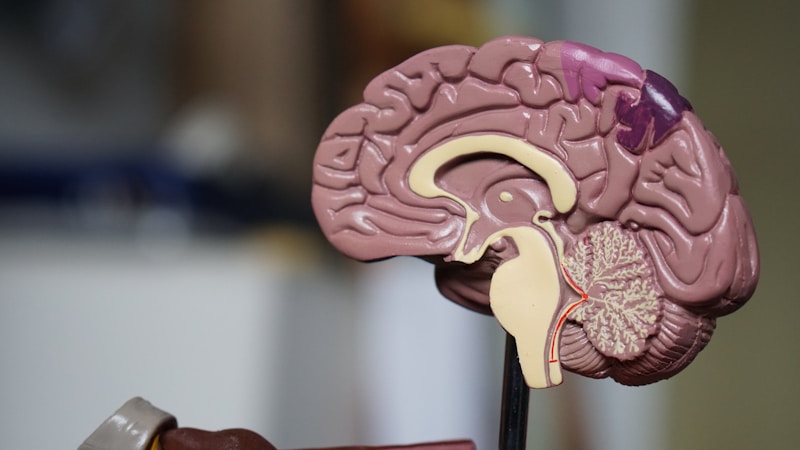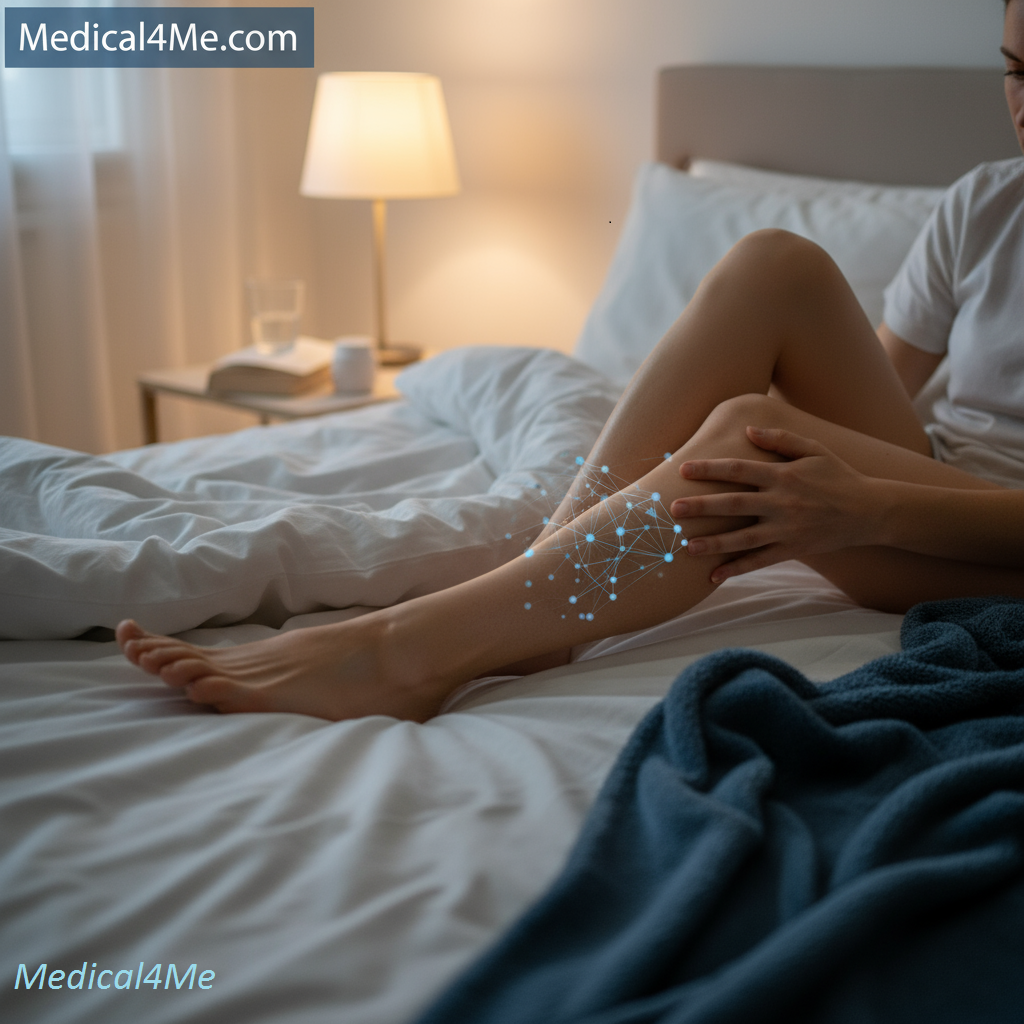Restless Legs Syndrome: Finally Understanding Those Annoying Leg Sensations

Ever tried explaining to someone that your legs feel like they have ants crawling inside them? Or that you literally can’t sit still during a movie because your legs are screaming at you to move? If you’re nodding along, you might be one of the millions dealing with restless legs syndrome. And no, you’re not crazy – this is a real medical condition that affects up to 10% of adults.
I remember one patient telling me she’d been suffering for 15 years before she even knew restless leg syndrome had a name. She thought everyone’s legs felt “jumpy” at bedtime. Turns out, she’d been missing out on years of good sleep for no reason. That’s why I’m writing this – because too many people don’t realize there’s actual help available.
So, what exactly are we dealing with here? Restless legs syndrome (some doctors call it Willis-Ekbom disease, but honestly, who remembers that?) is basically your nervous system playing tricks on you. Your brain and legs aren’t communicating properly, especially when you’re trying to rest. The result? Those maddening sensations that make you want to kick, stretch, or pace around when you should be sleeping.
What is Restless Legs Syndrome Exactly?
The Medical Lowdown
Restless Legs Syndrome is a neurological disorder where you get overwhelming urges to move your legs, usually with weird uncomfortable sensations. These feelings get worse when you’re resting and better when you move. They typically peak in the evening or at night – right when you’re trying to wind down. Fun, right?
Here’s the thing that drives people nuts about RLS – you can’t see it. There’s no rash, no swelling, nothing visible that says “hey, something’s wrong here.” But trust me, the sensations are 100% real. Patients describe them in all sorts of creative ways… crawling, pulling, throbbing, itching from the inside, electric shocks, or like soda bubbling through their veins.
Now, RLS comes in two flavors. Primary restless legs syndrome usually starts before age 40 and tends to run in families. If your mom or dad had jumpy legs, there’s about a 50/50 chance you’ll get them too. Secondary RLS shows up because of something else – maybe you’re pregnant, your iron’s low, or you have kidney problems.
What’s actually happening in your body? Well, researchers think it’s a dopamine problem. You know, that feel-good brain chemical? When evening rolls around, your dopamine levels naturally drop, and if you’re already running low or your brain doesn’t use it right, boom – restless legs. Iron plays a huge role too, since your brain needs iron to make dopamine properly.
The Cleveland Clinic reports that women get RLS about twice as often as men. Nobody’s totally sure why, but pregnancy probably has something to do with it. About 20% of pregnant women experience RLS, especially in the third trimester when iron demands are highest.
Spotting the Signs and Symptoms
Let’s talk about what restless leg syndrome actually feels like, because it’s not just “restless” legs. The sensations usually start deep in your legs – not on the skin, but way down in the muscles or even feeling like it’s in the bones. And they’re not painful exactly, just… uncomfortable in a way that’s hard to ignore.
How Bad Is Your RLS?
🟢 Mild: Happens once in a while, you can mostly ignore it
🟡 Moderate: Kicks in 2-3 nights a week, messes with your sleep
🔴 Severe: Every. Single. Night. You’re exhausted all the time
The classic pattern goes like this: You’re watching TV or lying in bed, and suddenly your legs start feeling weird. Moving them brings instant relief – but only while you’re moving. Stop, and within seconds or minutes, the feeling creeps back. Some nights you might find yourself doing leg exercises at 2 AM just to get some peace.
But here’s what a lot of people don’t know – RLS symptoms can show up other places too. About 1 in 5 people with RLS also get these sensations in their arms. I’ve had patients who feel it in their torso, and a few who even get it in their face (though that’s pretty rare, thank goodness).
And then there’s the leg jerking. This is called periodic limb movements, and your partner probably notices it before you do. Your legs might kick or twitch every 20-40 seconds all night long. You might not wake up completely, but it’s definitely messing with your sleep quality. One patient’s wife told me she thought her husband was dreaming about soccer every night!
The timing thing is crucial for diagnosis. RLS follows your body clock – it’s usually fine in the morning, starts getting annoying in the afternoon, and by evening it’s in full swing. This circadian pattern is so consistent that if your symptoms don’t follow it, doctors might look for other explanations.

Why Do People Get Restless Legs Syndrome?
Alright, so what causes this annoying condition? Iron deficiency is the big one – and I mean brain iron, not just blood iron. Your ferritin (that’s your iron storage) can look normal on a blood test but still be too low for your brain’s dopamine factories. Weird, right? That’s why doctors who really know RLS want to see your ferritin above 75, even though “normal” starts at 12.
Genetics definitely matter. If one of your parents has restless legs syndrome, you’ve got about a 50% chance of getting it too. Scientists have found at least six genes linked to RLS, mostly affecting iron metabolism and dopamine pathways. So yeah, you can totally blame your parents for this one.
Then there’s all the stuff that can trigger or worsen RLS:
- Health conditions: Kidney disease is huge – about 25% of dialysis patients have RLS. Also diabetes, and thyroid problems
- Pregnancy: Especially the last trimester. Good news though – it usually goes away after delivery
- Medications: Antihistamines (yep, even Benadryl), many antidepressants, anti-nausea meds, and some antipsychotics
- Lifestyle stuff: Too much caffeine, alcohol (it might help you fall asleep but makes RLS worse later), smoking
- Being overtired: Lack of sleep makes everything worse, including RLS. Talk about a vicious cycle
Age is another factor – RLS can start at any age, but it usually gets worse as you get older. And women, especially during pregnancy or menopause, seem to be more susceptible. Some researchers think hormones play a role, but nobody’s figured out exactly how yet.
According to the [SOURCE: Mayo Clinic], certain substances can trigger symptoms in people who are predisposed. Even that afternoon coffee might be sabotaging your evening relaxation time.
Getting the Right Diagnosis
So how do doctors actually diagnose restless leg syndrome? There’s no fancy scan or single blood test that says “yep, you’ve got RLS.” Instead, diagnosis is based on what you tell your doctor. There are five main criteria, and you need to hit all of them:
First, you gotta have that urge to move your legs (usually with weird sensations). Second, it gets worse when you’re resting. Third, moving helps. Fourth, it’s worse in the evening or night. And fifth, it can’t be explained by something else like leg cramps or arthritis.
Your doctor’s gonna ask a ton of questions. When did this start? Does anyone in your family have it? What makes it better or worse? How’s your sleep? Bring notes – seriously. Keep a diary for a week or two tracking when symptoms hit and how bad they are on a scale of 1-10.
Prep for Your Doctor Visit
- Write down exactly what your legs feel like (be specific!)
- Track your symptoms for at least a week
- List all your meds and supplements (even vitamins)
- Note if anyone in your family has similar issues
- Ask your partner about nighttime leg movements
Blood tests are usually next. Your doc will check your iron levels – not just hemoglobin, but ferritin, transferrin saturation, and total iron binding capacity. Low ferritin is super common in RLS, even when everything else looks normal. They’ll probably also check your kidney function, thyroid, vitamin B12, folate, and magnesium.
Sometimes they’ll recommend a sleep study, especially if they think you might have sleep apnea too (which is pretty common) or if they want to document those periodic limb movements. You spend a night in a sleep lab all wired up while they monitor everything. Not exactly a five-star hotel experience, but it can provide useful info.
Treatment Options That Actually Work
Let me break down your treatment options, because there’s actually quite a bit you can try. The right approach depends on how severe your symptoms are and what’s causing them.
| Treatment | Works For | How Fast | Downsides | Monthly Cost |
|---|---|---|---|---|
| Iron Pills | 70-80% if low iron | 2-3 months | Constipation, stomach upset | $10-30 |
| Gabapentin | 75-85% | 1-2 weeks | Drowsiness, weight gain | $20-100 |
| Dopamine Drugs | 85-90% | Few days | Can make it worse long-term | $50-300 |
| Lifestyle Changes | 40-60% | 2-4 weeks | Takes commitment | Free |
| Opioids | 80-90% | Same day | Addiction risk | $30-150 |
If your ferritin’s below 75, iron supplementation is usually the first move. Take it with vitamin C (orange juice works) and avoid calcium and coffee around the same time – they block absorption. Some people need IV iron if pills don’t work or cause too many stomach problems.
For moderate to severe RLS, medications usually come into play. Gabapentin or pregabalin are often first choice now, especially for people who also have pain or anxiety. They work pretty well and don’t have the augmentation problem (where symptoms get worse over time) that dopamine drugs have.
Speaking of dopamine agonists like pramipexole or ropinirole – they work amazingly well at first. But here’s the catch: after a few months or years, they can actually make your RLS worse. It’s called augmentation, and it happens to about 1 in 3 people who take these drugs long-term. Symptoms start earlier in the day, spread to other body parts, and get more intense. Not fun.
Lifestyle stuff matters too, though it probably won’t cure severe RLS on its own. Regular exercise helps (but not too late in the day), as does keeping a consistent sleep schedule. Some people swear by leg massages, hot baths, or cold packs. Compression devices might help some folks, though the evidence is mixed.

How to Prevent RLS Flare-Ups
Okay, so you can’t always prevent restless legs syndrome, especially if it runs in your family. But you can definitely reduce flare-ups and keep symptoms from getting worse. Think of it like managing any chronic condition – it’s all about the daily habits.
Daily RLS Prevention Checklist
- Get your 30 minutes of exercise (walking counts!)
- Skip that afternoon coffee (sorry, I know it hurts)
- Take your iron with vitamin C if prescribed
- Do some stretches before bed
- Keep the same sleep schedule, even on weekends
Diet matters more than you might think. Load up on iron-rich foods – red meat, spinach, beans, fortified cereals. But here’s a pro tip: plant-based iron needs help getting absorbed, so pair it with vitamin C foods. Spinach salad with strawberries? Perfect combo. Beans with tomato sauce? You got it.
Watch your triggers. That glass of wine might help you relax initially, but alcohol makes RLS worse later in the night. Same with nicotine. And that antihistamine you take for allergies? Might be making your legs worse. Talk to your doctor about alternatives.
Stress is a huge trigger for many people. I know, I know – easier said than done. But things like meditation, yoga, or even just deep breathing exercises can really help. One patient told me she started doing 10 minutes of meditation before bed and it cut her symptoms in half. Worth a try, right?
Create an RLS-friendly bedroom. Keep it cool (around 65-68°F seems ideal), dark, and quiet. Some people find weighted blankets helpful, others hate them. If you’re a side sleeper, try a pillow between your knees. And definitely ditch the screens an hour before bed – the blue light messes with your sleep hormones.
When Should You See a Doctor?
Get Medical Help Right Away If:
- Sudden severe RLS with no previous history
- One leg is swollen, red, or warm (could be a blood clot)
- Severe pain along with the restless feelings
- RLS symptoms spreading to your chest or affecting breathing
- Symptoms getting rapidly worse despite treatment
But honestly, don’t wait for an emergency. If restless leg syndrome is messing with your sleep more than a couple nights a week, see your doctor. Sleep deprivation is no joke – it affects everything from your immune system to your mood to your risk of car accidents.
And if your primary care doc isn’t helping after a few months, ask for a referral to a neurologist or sleep specialist. Some doctors still don’t take RLS seriously (frustrating, I know), but specialists usually get it. They have more treatment options and experience with complex cases.
Definitely see someone if you’re pregnant and developing RLS – there are safe treatment options, and you don’t need to suffer through it. Same goes if you have kidney disease or diabetes – RLS might be a sign that your condition needs better management.
Keep track of any new medications that seem to trigger symptoms. Sometimes switching to a different drug in the same class can make a huge difference. Don’t stop taking prescribed meds on your own though – always talk to your doctor first.
Real Patient Story
Janet, a 52-year-old accountant, came to see me after dealing with “crazy legs” for nearly a decade. “I thought I was losing my mind,” she said. She’d tried everything – massage, supplements from the health food store, even sleeping pills that just left her groggy but still kicking. Her husband had started sleeping in the guest room because her legs would jerk all night. She was exhausted, irritable, and starting to make mistakes at work.
Testing showed her ferritin was only 18 – way too low for someone with RLS. We started iron supplements and added gabapentin for immediate relief. Six weeks later, she was a different person. “I forgot what it felt like to actually sleep,” she told me, practically in tears. Her husband’s back in their bed, and she’s even started exercising again – something she’d given up because she was always too tired. She still has occasional bad nights, especially when stressed, but manages them with her medications and a hot bath routine. “I have my life back,” she says.
What’s New in RLS Research?
The research world is actually pretty excited about RLS right now. A 2023 study from Johns Hopkins found that people with restless legs syndrome have specific differences in how their brains handle iron – not just low iron, but actually different iron metabolism. This could lead to more targeted treatments instead of just throwing iron supplements at everyone.
There’s also cool stuff happening with genetics. Researchers identified three new gene variants associated with RLS in late 2023, bringing the total to nine. Why does this matter? Because understanding the genetics helps develop better drugs. We might see personalized RLS treatment based on your genetic profile within the next decade.
The [SOURCE: National Institute of Neurological Disorders] is funding studies on new non-drug treatments too. There’s a device being tested that uses targeted vibrations to basically confuse the nervous system and stop RLS sensations. Early results show about 60% improvement without any drugs. Pretty cool if it pans out.
And here’s something interesting – researchers are looking at the gut-brain connection in RLS. Some studies suggest that people with RLS have different gut bacteria than those without it. Could probiotics help? Maybe. It’s too early to say for sure, but it’s another avenue being explored.

Living Your Life with RLS
Having restless legs syndrome doesn’t mean your life is over – far from it. Yeah, it’s annoying and sometimes exhausting, but tons of people manage it successfully. The key is finding what works for you and sticking with it.
Travel can be tricky with RLS. Long flights or car rides are basically your worst nightmare, right? Book aisle seats so you can get up and walk. Bring your meds (plus extra in case of delays). Compression socks might help, and stay hydrated. Some people take an extra dose of their medication on travel days – ask your doctor if that’s okay for you.
Work can be challenging too, especially if you have a desk job. Get up and walk every hour if possible. Under-desk pedal exercisers can help. If you’re comfortable sharing, let your boss know you have a medical condition that requires movement breaks. Most employers are pretty under standing.
Don’t underestimate the importance of support. Whether it’s family, friends, or an online RLS community, talking to people who get it really helps. Your partner especially needs to understand this isn’t something you can control. sleep disorders on Medical4Me.com affect relationships, but communication helps a lot.
And please, don’t feel guilty about taking medication if you need it. Some people worry they’re being weak or dependent. But RLS is a neurological condition – you wouldn’t feel guilty taking insulin for diabetes, right? Same thing here.
Frequently Asked Questions
The Bottom Line
Look, dealing with restless legs syndrome can be incredibly frustrating. Those nights when you’re exhausted but your legs won’t let you sleep? I get it. But here’s what I want you to remember – this is a real medical condition with real treatments that work.
The most important things? Get your iron checked (and I mean really checked – ferritin and everything). Work with your doctor to find the right treatment combo, whether that’s supplements, medications, or lifestyle changes. And don’t give up if the first thing doesn’t work – sometimes it takes a bit of trial and error.
If you’re reading this at 2 AM because your legs won’t quit, know that you’re not alone and it can get better. Start keeping that symptom diary, make that doctor’s appointment, and check out those lifestyle tips. Small steps can lead to big improvements.
Want to learn more about related conditions? Check out our guide on insomnia . And remember – your sleep is worth fighting for. Don’t let RLS steal another night from you.
Medical Disclaimer: This content is for informational purposes only and is not a substitute for professional medical advice, diagnosis, or treatment. Always seek the advice of your physician or other qualified health provider with any questions you may have regarding a medical condition. Never disregard professional medical advice or delay in seeking it because of something you have read on Medical4Me.com.

💬 Share Your Experience
Share your thoughts, questions, or personal tips below. Our community and editorial team value respectful and insightful discussions.